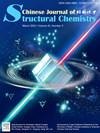All-sputtered proton-conductive fuel cells based on flashlight-sintered thin-film Y:BaZrO3–δ electrolyte
IF 5.9
4区 化学
Q1 CHEMISTRY, INORGANIC & NUCLEAR
引用次数: 0
Abstract
In this work, we present an innovative method for fabricating high-performance proton-conductive fuel cells (PCFCs) by combining magnetron sputtering and flashlight sintering (FLS) techniques. BaZr0.8Y0.2O3–δ (BZY20) electrolyte thin-films are successfully prepared by improving the crystallinity while maintaining the stoichiometry. All components of PCFC, Ni-YSZ anode, BZY20 electrolyte and Pt-GDC cathode are fabricated by sequentially sputtering them onto an AAO substrate. Electrolytic sintering is performed at 550 and 650 V conditions using FLS, effectively solving the Ba evaporation problem encountered in conventional thermal sintering methods. XRD analysis confirms that the perovskite structure is retained, and crystallinity is improved in the FLS samples. Furthermore, FE-SEM and EDS analyses confirm the uniform elemental distribution and consistent thickness of the FLS-treated electrolyte. An optimized PCFC unit cell with FLS-treated electrolyte exhibits a peak power density of 200.0 mW cm−2 at 500 °C and an ohmic resistance of 376.0 mΩ cm−2. These results suggest that the combination of magnetron sputtering and FLS techniques is a promising approach for fabricating high-performance thin-film PCFCs.

基于闪光灯烧结薄膜Y:BaZrO3 -δ电解质的全溅射质子导电燃料电池
在这项工作中,我们提出了一种结合磁控溅射和手电筒烧结技术制造高性能质子导电燃料电池(pcfc)的创新方法。在保持化学计量的同时,提高了结晶度,成功制备了BaZr0.8Y0.2O3 -δ (BZY20)电解质薄膜。PCFC、Ni-YSZ阳极、BZY20电解质和Pt-GDC阴极的所有组件都是通过顺序溅射在AAO衬底上制备的。利用FLS在550和650 V的条件下进行电解烧结,有效地解决了传统热烧结方法中Ba的蒸发问题。XRD分析证实,FLS样品保留了钙钛矿结构,结晶度得到改善。此外,FE-SEM和EDS分析证实了fls处理后的电解液元素分布均匀,厚度一致。在500℃时,经fls处理的PCFC单体电池的峰值功率密度为200.0 mW cm - 2,欧姆电阻为376.0 mΩ cm - 2。这些结果表明,磁控溅射和FLS技术的结合是制备高性能薄膜pcfc的一种很有前途的方法。
本文章由计算机程序翻译,如有差异,请以英文原文为准。
求助全文
约1分钟内获得全文
求助全文
来源期刊

结构化学
化学-晶体学
CiteScore
4.70
自引率
22.70%
发文量
5334
审稿时长
13 days
期刊介绍:
Chinese Journal of Structural Chemistry “JIEGOU HUAXUE ”, an academic journal consisting of reviews, articles, communications and notes, provides a forum for the reporting and discussion of current novel research achievements in the fields of structural chemistry, crystallography, spectroscopy, quantum chemistry, pharmaceutical chemistry, biochemistry, material science, etc. Structural Chemistry has been indexed by SCI, CA, and some other prestigious publications.
 求助内容:
求助内容: 应助结果提醒方式:
应助结果提醒方式:


